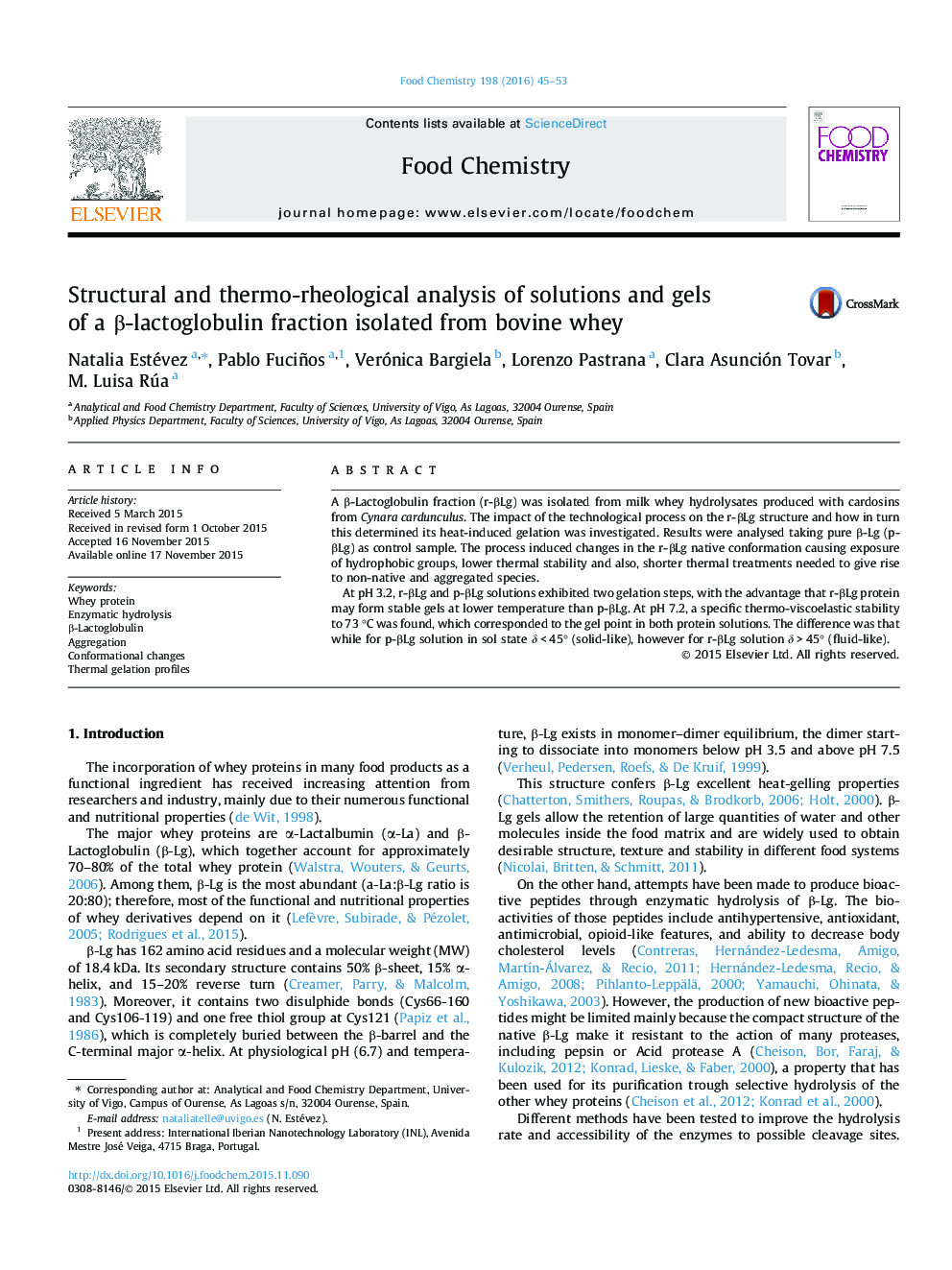| Article ID | Journal | Published Year | Pages | File Type |
|---|---|---|---|---|
| 1184773 | Food Chemistry | 2016 | 9 Pages |
•A β-Lg fraction was recovered from whey hydrolysates obtained with cardosins.•Changes in the structure of β-Lg were detected by fluorescence spectroscopy.•At acidic pH, the β-Lg formed stable gels at lower temperature than commercial β-Lg.•At pH 7.2, the sol state was fluid-like for β-Lg and solid-like for commercial β-Lg.
A β-Lactoglobulin fraction (r-βLg) was isolated from milk whey hydrolysates produced with cardosins from Cynara cardunculus. The impact of the technological process on the r-βLg structure and how in turn this determined its heat-induced gelation was investigated. Results were analysed taking pure β-Lg (p-βLg) as control sample. The process induced changes in the r-βLg native conformation causing exposure of hydrophobic groups, lower thermal stability and also, shorter thermal treatments needed to give rise to non-native and aggregated species.At pH 3.2, r-βLg and p-βLg solutions exhibited two gelation steps, with the advantage that r-βLg protein may form stable gels at lower temperature than p-βLg. At pH 7.2, a specific thermo-viscoelastic stability to 73 °C was found, which corresponded to the gel point in both protein solutions. The difference was that while for p-βLg solution in sol state δ < 45° (solid-like), however for r-βLg solution δ > 45° (fluid-like).
